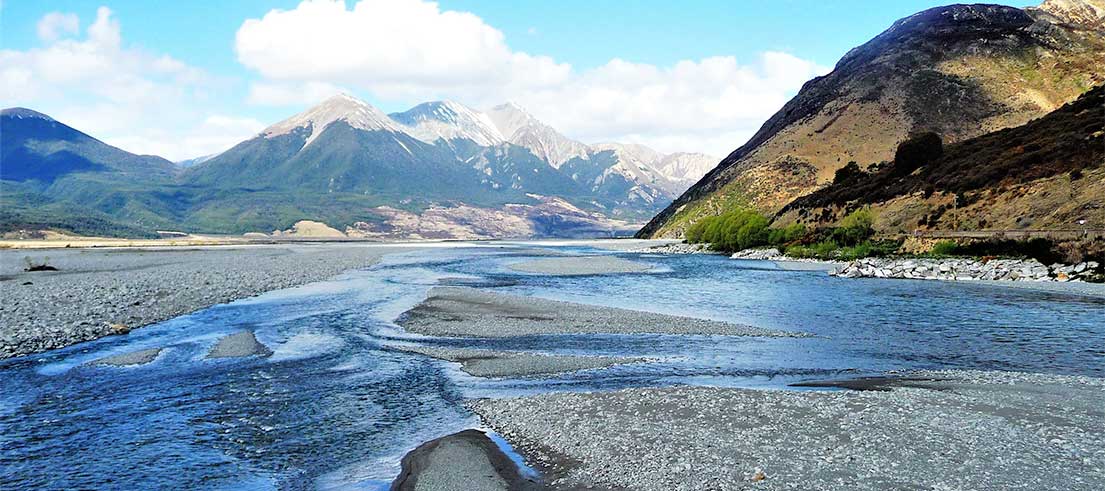
Council approves changes that simplify rules to manage water quality
Council has approved new rules that will streamline the consents process and strengthen restrictions on some activities to improve water quality across significant parts of the region.
The Council approved the following changes during the meeting on 16 August 2023:
- Plan Change 7 to the Canterbury Land Water Regional Plan to be made partially operative from 1 September 2023
- Plan Change 2 to the Waimakariri River Regional Plan fully operative from 1 September 2023.
Deputy Chair, Councillor Craig Pauling welcomed the changes as positive for the environment and the community.
"They will make things simpler for people and will streamline the consenting process, making it easier for staff and applicants alike to understand and navigate."
Key changes
Thanks to extensive work by staff working closely with the Ōrāri Temuka Ōpihi Pareora and Waimakariri water zone committees, and with input from the wider community, key changes include:
- setting more stringent freshwater outcomes and water quality and quantity limits identifying habitats of indigenous freshwater species, additional freshwater bathing sites and salmon spawning areas - and restricting activities in order to protect them
- revising the nutrient management framework to reduce the area allowed for winter grazing and irrigation as permitted activities, and requiring farms in high nitrogen areas to reduce nitrogen losses over time
- enabling consideration of Ngāi Tahu values in relation to a wider range of activities
- setting new minimum flows and new limits on the volume of surface water and groundwater available
- a requirement to exclude stock from a wider range of waterbodies.
Deputy Chair Pauling said it had been a massive process over several years as the Council worked to finalise the changes.
"It is a significant outcome as the plan began to be drafted in 2016, was lodged in 2019 and went to hearings during 2020, with a number of appeals being dealt with over the last few years, with all but one being resolved – so it is great that we can get on with making the majority of the plan operative."
Integrating plan changes
Over the coming weeks, the Council will update the CLWRP to incorporate the amendments. The CLWRP is our plan for the integrated management of land and water resources within the Canterbury region.
Proposed changes in relation to plantation forestry will not be made operative until the appeal on these aspects of Plan Change 7 has been resolved.
Importantly, the changes recognise and incorporate the community’s aspirations for water in the area covered by the Plan.
"As a key priority, we will continue to focus on addressing consenting issues, as well as working on the review of the Canterbury Regional Policy Statement and future reviews of our CLWRP to bring them into line with the National Policy Statement for Freshwater Management 2020 (NPSFM-20).
Making Plan Change 7 operative is a significant milestone, particularly due to the key rules around raising the bar on water quality and quantity targets, nutrient management and Ngāi Tahu values and represents real and positive progress," Councillor Pauling says.
Summary of Plan Change 2 and Plan Change 7
Plan Change 7
Plan Change 7 amends both the region-wide, and the catchment-specific sub-regional sections of the CLWRP:
- Part A of Plan Change 7 introduces region-wide responses to a range of issues that have emerged, particularly arising from amendments to the NPSFM-20, the introduction of the National Environmental Standard for Plantation Forestry and provisions for managing a number of discrete activities or topics.
- Part B and C amendments to Section 14 (OTOP - Orari-Temuka-Opihi-Pareora sub-region) and Section 8 (Waimakariri sub-region) respectively, respond to recommendations made by the respective water zone committees as part of their Zone Implementation Programmes.
Plan Change 2
Plan Change 2 is a consequential change to the WRRP to exclude the northern tributaries of the Waimakariri River from the area covered by the WRRP, so that only the CLWRP applies to the management of land and freshwater resources in the Waimakariri sub-region.
The WRRP applies to the Waimakariri River Catchment, excluding the area seaward of Ferry Road which lies within the coastal marine area.
The water quality rules in the plan do not apply to the Styx River catchment. It sets out issues and the objectives, policies, and methods for resolving the resource management issues relating to the catchment.
